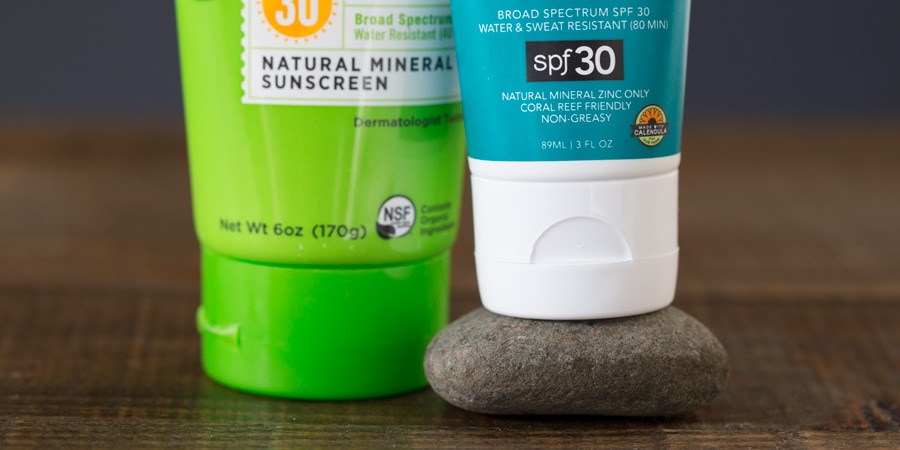The National Park Service estimates that up to 6,000 tons of sunscreen enters areas in and around reefs every year and studies show that chemicals in these sunscreens may be contributing to the declining health of coral. Sunscreen isn't the only threat to reefs; scientists also point to climate change, overfishing and pollution. But the risk that sunscreen poses has led some sunscreen manufacturers to offer "reef-safe" formulas and even a few popular vacation destinations to ban the sale of anything but "reef-safe" sunscreen. What does "reef-safe" really mean? Here's a closer look.
What does "Reef-safe" or "Reef-friendly" Sunscreen Mean?
Terms like "reef-safe" or "reef-friendly" are typically used to identify sunscreens that do not contain oxybenzone and octinoxate, two common UV-blocking chemicals, that studies have shown can cause coral bleaching. When coral bleaches (turns white), it's still alive, but it's under severe stress, which leaves it susceptible to disease and death.
In July 2018, the state of Hawaii banned the sale of sunscreens containing oxybenzone and octinoxate. The city of Key West, Florida, followed suit in early 2019. When both laws go into effect in 2021, people there will only be able to purchase so-called "reef-safe" sunscreens.
Now the truth of it is, no sunscreen has been proven to be completely safe for marine life. And terms like "reef-safe" or "reef-friendly" do not have agreed-upon definitions, nor is their use regulated by the FDA or managed by a standard-setting organization. Oxybenzone and octinoxate are two of the more widely studied chemicals in sunscreens, but other ingredients, such as preservatives, fragrances and other UV-blocking chemical agents, like as octocrylene, are also being scrutinized for their impact on coral. In 2018, the Journal of the American Academy of Dermatology published a paper stating that more research is required to fully comprehend the impact of sunscreens on coral and that people should continue to take all necessary steps to protect themselves from the sun's harmful ultraviolet rays.
"Reef-safe" Sun Protection Tips

The ambiguity around terms like "reef-safe" and "reef-friendly," make it difficult to know what actions to take and which sunscreen to wear, even when a label touts reef safety. Here's what we recommend when considering the impact on coral reefs:
- Wear sun protection clothing: Covering your skin with clothing that's UPF-rated significantly reduces the amount of sunscreen you need to wear. Learn more about sun protection clothing.
- Avoid oxybenzone or octinoxate: Evidence suggests that oxybenzone and octinoxate are two of the more harmful chemicals for reefs found in sunscreens.
- Choose a non-nano, mineral-based formula: According to the National Park Service, mineral-based sunscreens that use ingredients like zinc oxide and titanium oxide are not associated with coral bleaching and therefore are less impactful to reefs. When choosing a mineral-based sunscreen, make sure it's labeled as "non-nano." This means that the particles in the sunscreen are larger than 100 nanometers and therefore too large to be ingested by coral.
- Avoid parabens: These are preservatives found in some skin-care products including some sunscreens. Butylparaben has been shown to cause coral reef bleaching, and some health questions surround parabens in general, so many brands don't use them and promote their sunscreens as "paraben-free."
- Use a rub-on lotion: Use a lotion that you rub onto your skin rather than a spray that can easily land on the sand and wash into the ocean.
- Look for good water resistance: A sunscreen that stays on longer when you're in the water is less likely to wash off. To maximize your sunscreen's water resistance, always follow the application instructions pertaining to how long to wait before jumping in the water.
Learn more about sunscreen in our article, How to Choose and Use Sunscreen.

